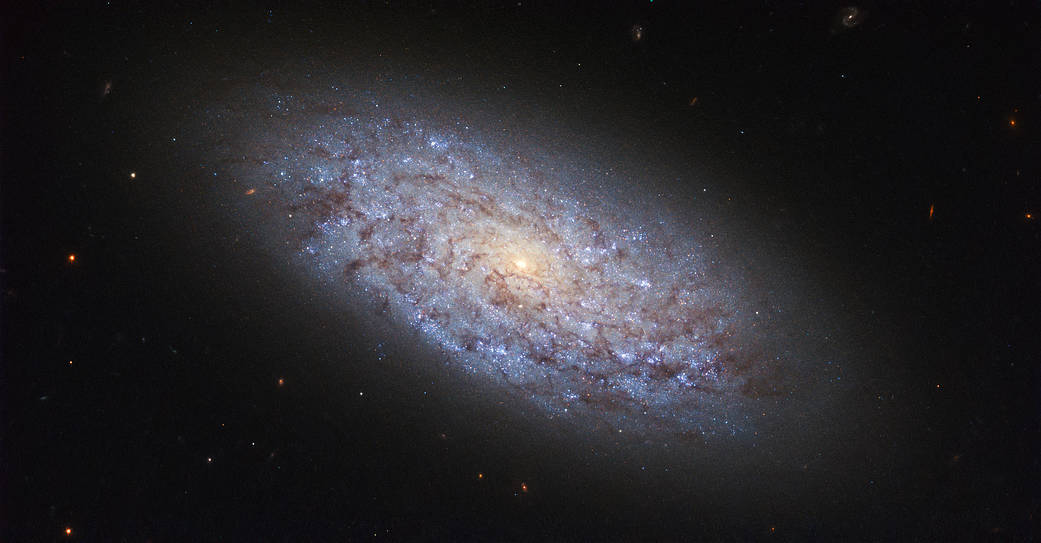Released the largest catalogue of galaxy morphological classification to date

The scientific team used Artificial Intelligence — specifically, a machine learning algorithm with 97% accuracy — to separate galaxies in two morphological types, even the faint and distant ones.
A study led by the University of Pennsylvania (UPENN) and the Institute of Physics of Cantabria (UC-CSIC) has produced the largest catalogue of galaxy morphological classification to date, including 27 million galaxies. The researcher from the Institute of Space Studies of Catalonia (IEEC — Institut d’Estudis Espacials de Catalunya) at the Institute of Space Sciences (ICE, CSIC) Helena Domínguez Sánchez is the second author of this research, recently published in the journal Monthly Notices of the Royal Astronomical Society.
The researchers used Artificial Intelligence (AI), specifically, a machine learning algorithm with up to an accuracy of 97% to learn how to separate galaxies in morphological types, even the faint and distant ones. To conduct the classification, the team used data from the Dark Energy Survey (DES) — a dataset cataloguing hundreds of millions distant galaxies over six years —.

Original images (left-most panels) of a spiral (top) and an elliptical (bottom) galaxy and their degraded versions, used for training the convolutional neural network. For the more distant galaxies (right-most panels) it is difficult to distinguish the two classes by eye. Credit: J. Vega-Ferrero et al.
The morphology of galaxies is closely related to the kind of stars they are built of and their formation mechanisms. This catalogue includes two main morphological types: spiral galaxies, with a rotating disk where new stars are born; and elliptical galaxies, the most massive galaxies in the Universe, composed of old stars and dominated by random motions.
It is easy to distinguish these two galaxy types at a glance. However, the galaxy morphological classification faces two main problems: first, the huge number of galaxies to be classified compels to use automated classifications, and secondly, the fact that distant galaxies look fainter and smaller, which usually makes images very noisy.
The researchers degraded high-quality images of local galaxies in order to give to them the appearance they would have if they were at larger distances, and used the correct labels to train a convolutional neural network (CNN). This type of neural network is a deep learning algorithm able to take in an input image and assign a label to different features of that image to distinguish them from each other. According to the study, the algorithm guessing the galactic morphology is correct 97% of the time, regardless of the noise and the spatial resolution of the images.
This study proves that machines are able to recover features which remain hidden to the human eye and to separate useful signals from noise when trained with the correct labels, even in the most difficult cases.
The use of CNN has proven to be extremely successful for analysing and classifying galaxy images, and has allowed researchers to perform a classification of 27 million galaxies and produce the largest morphological galaxy catalogue published to date.
Some of the galaxies included in the catalogue are as far away as 8 gigayears (Gyr), meaning 8 billion years. This catalogue allows to have an approximate picture of how the galaxies looked like when the Universe was half the age it is today, to study the changes in their shapes and how these structural changes are linked to their evolutionary paths during the last 8 Gyr.
The automatic pattern recognition in noisy data can have direct applications in other fields, such as security (i.e., facial recognition), industrial image recognition, clinical diagnosis or climate change.
Links
More information
This research is presented in a paper entitled “Pushing automated morphological classifications to their limits with the Dark Energy Survey”, by J. Vega-Ferrero, H. Domínguez Sánchez, et al., that appeared in the journal Monthly Notices of the Royal Astronomical Society on 2 March 2021.
The Institute of Space Studies of Catalonia (IEEC — Institut d’Estudis Espacials de Catalunya) promotes and coordinates space research and technology development in Catalonia for the benefit of society. IEEC fosters collaborations both locally and worldwide and is an efficient agent of knowledge, innovation and technology transfer. As a result of 25 years of high-quality research, done in collaboration with major international organisations, IEEC ranks among the best international research centers, focusing on areas such as: astrophysics, cosmology, planetary science, and Earth Observation. IEEC’s engineering division develops instrumentation for ground- and space-based projects, and has extensive experience in working with private or public organisations from the aerospace and other innovation sectors.
IEEC is a private non-profit foundation, governed by a Board of Trustees composed of Generalitat de Catalunya and four other institutions that each have a research unit, which together constitute the core of IEEC R&D activity: the University of Barcelona (UB) with the research unit ICCUB — Institute of Cosmos Sciences; the Autonomous University of Barcelona (UAB) with the research unit CERES — Center of Space Studies and Research; the Polytechnic University of Catalonia (UPC) with the research unit CTE — Research Group in Space Sciences and Technologies; the Spanish Research Council (CSIC) with the research unit ICE — Institute of Space Sciences. IEEC is a CERCA (Centres de Recerca de Catalunya) center.
Image
PR_Image1.jpg
Caption: Generic picture of a dwarf galaxy.
Credit: NASA's Goddard Space Flight Center/Jenny Hottle
Contacts
IEEC Communication Office
Barcelona, Spain
Ana Montaner and Rosa Rodríguez
E-mail: comunicacio@ieec.cat
Lead Researcher at IEEC
Barcelona, Spain
Helena Domínguez Sánchez
Institute of Space Studies of Catalonia (IEEC)
Institute of Space Sciences (ICE, CSIC)
E-mail: hdominguez@ieec.cat; dominguez@ice.csic.es
